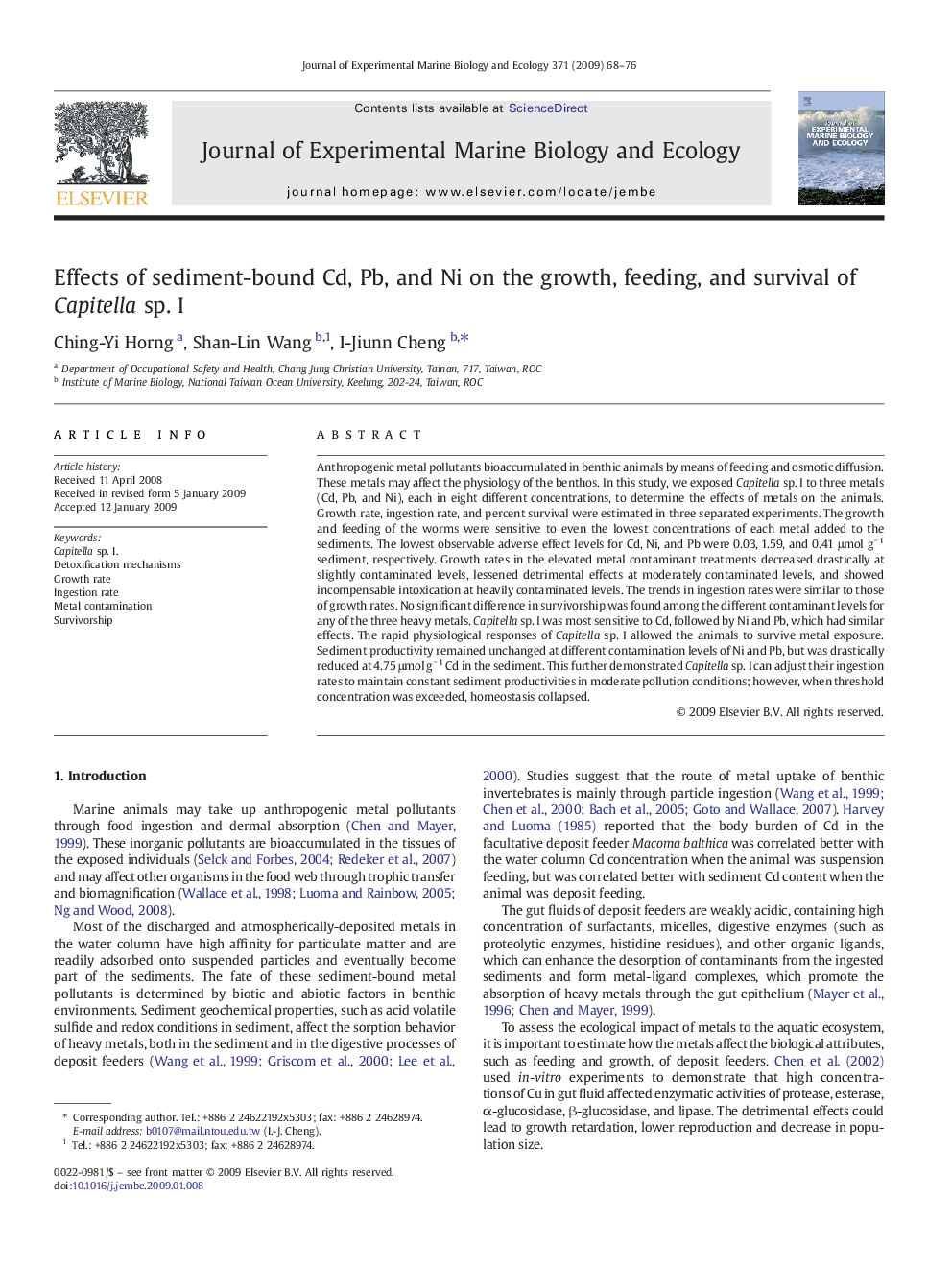| Article ID | Journal | Published Year | Pages | File Type |
|---|---|---|---|---|
| 4397014 | Journal of Experimental Marine Biology and Ecology | 2009 | 9 Pages |
Anthropogenic metal pollutants bioaccumulated in benthic animals by means of feeding and osmotic diffusion. These metals may affect the physiology of the benthos. In this study, we exposed Capitella sp. I to three metals (Cd, Pb, and Ni), each in eight different concentrations, to determine the effects of metals on the animals. Growth rate, ingestion rate, and percent survival were estimated in three separated experiments. The growth and feeding of the worms were sensitive to even the lowest concentrations of each metal added to the sediments. The lowest observable adverse effect levels for Cd, Ni, and Pb were 0.03, 1.59, and 0.41 μmol g− 1 sediment, respectively. Growth rates in the elevated metal contaminant treatments decreased drastically at slightly contaminated levels, lessened detrimental effects at moderately contaminated levels, and showed incompensable intoxication at heavily contaminated levels. The trends in ingestion rates were similar to those of growth rates. No significant difference in survivorship was found among the different contaminant levels for any of the three heavy metals. Capitella sp. I was most sensitive to Cd, followed by Ni and Pb, which had similar effects. The rapid physiological responses of Capitella sp. I allowed the animals to survive metal exposure. Sediment productivity remained unchanged at different contamination levels of Ni and Pb, but was drastically reduced at 4.75 μmol g− 1 Cd in the sediment. This further demonstrated Capitella sp. I can adjust their ingestion rates to maintain constant sediment productivities in moderate pollution conditions; however, when threshold concentration was exceeded, homeostasis collapsed.
